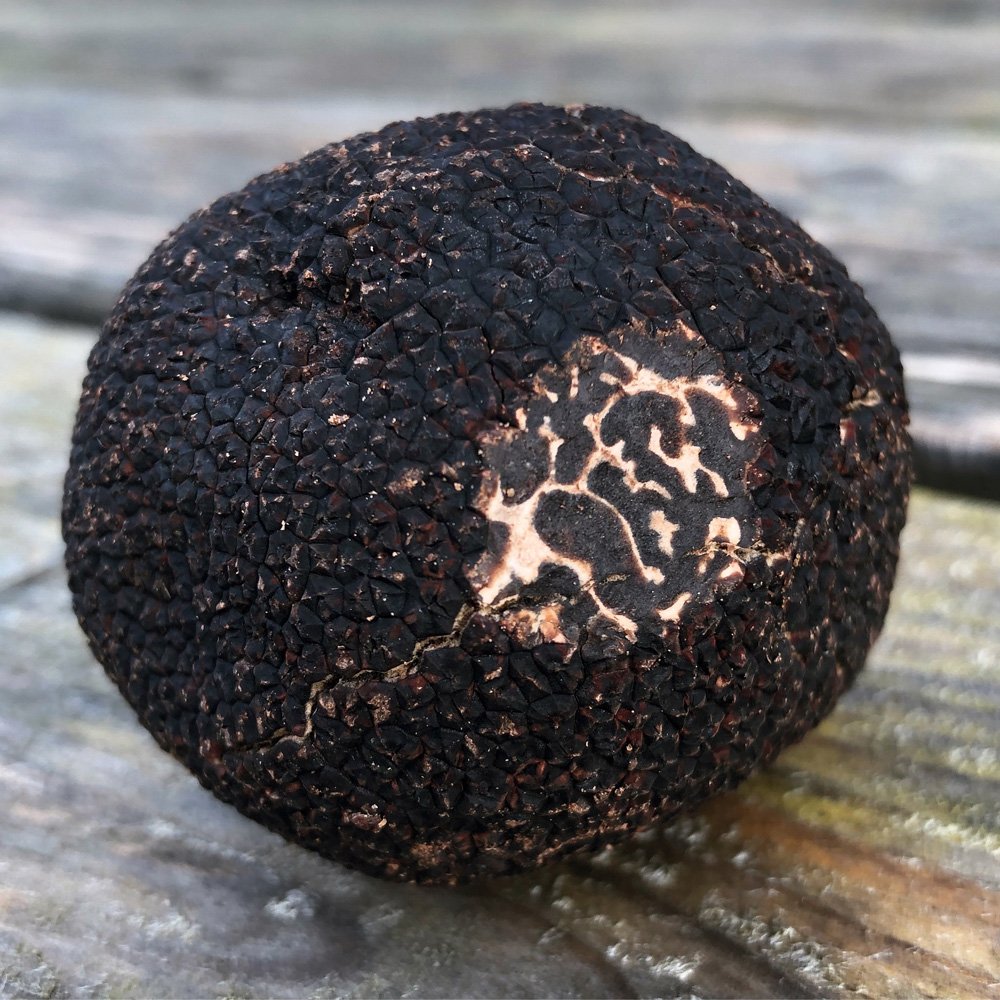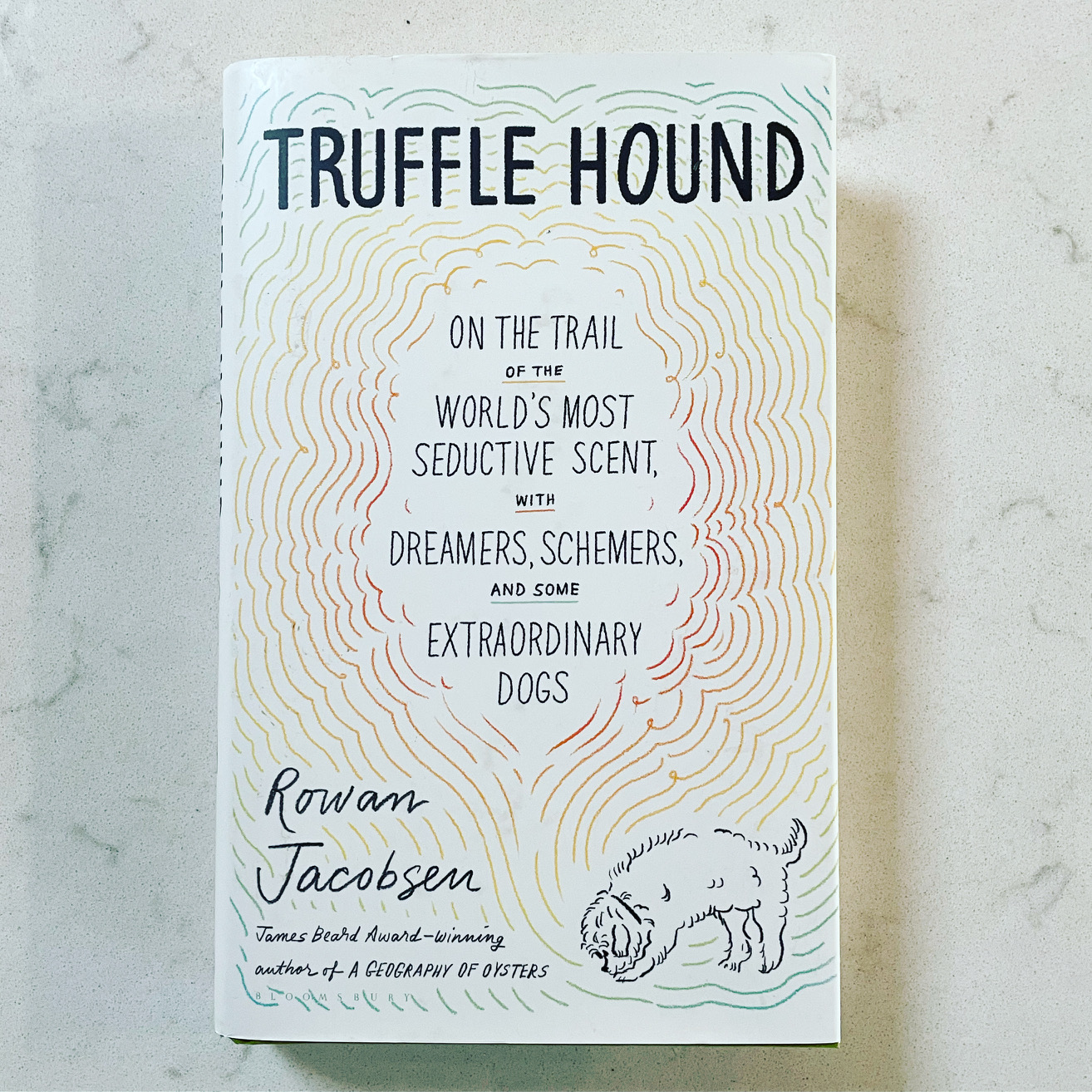Why don’t we sell ‘normal’ truffle products? Because they’re nothing to do with real truffles…
Almost all are made with an artificial truffle flavouring, which ruins your appreciation of the wonderfully complex natural flavour and aroma of real truffles.
Truffles have a very subtle flavour, yet one that is utterly wonderful when you come to know and appreciate it. They can add a seductive earthy umami to other flavours, often creating something very special that is greater than the sum of its parts. You may not always actively notice it as truffle, but if the truffle were removed you would notice immediately that the dish or product has lost its magic.
The problem is that “truffle” products have changed general perceptions of how truffle actually tastes. They are very overpowering – assaulting your tastebuds in a bad way, leaving an unpleasant lingering aftertaste which gets worse the more often you experience it. Even when only consumed occasionally in tiny quantities, this artificial truffle flavouring can limit your future ability to taste and appreciate real truffles.
The main chemical generally used in truffle products – 2,4 dithiapentane – is an artificially created version of one of the many flavour components in fresh truffles. But if you eat fresh truffles regularly, you’ll know that it is like comparing cheap artificial strawberry sweets to a delicious fresh seasonal strawberry.
Trading standards law seems to allow this chemical to be described as either ‘aroma’ or ‘flavouring’. The word ‘aroma’ sounds natural and lovely – it just means ‘smell’ of course – so its use here could be misleading. Meanwhile I don’t understand why ‘flavouring’ doesn’t have to be called ‘artificial truffle flavour’ – as it in no way comes from a real truffle.
Have a look at the ingredients list of any truffle product on the shelf in the supermarket or delicatessen – you will always see the words ‘truffle flavour’, ‘flavouring’ or ‘aroma’ on the list of ingredients. Occasionally you will also see the words ‘natural truffle flavouring’, but ‘natural’ does not mean that the flavouring came from a truffle – merely that the flavouring used was originally derived from any plant or animal source.
Of course, truffle products do often contain real truffle as well. These truffles will usually be contributing no flavour whatsoever – they are simply there so that the marketing for the product can say “made with real truffles”. If you took away the artificial chemicals, there would be little to zero taste of actual truffles in the product.
Truffle products aimed at home chefs are almost invariably made with the cheapest and least prized varieties of truffles. This is based on the fact that most buyers won’t really know which truffle variety is which, and since the truffles are being put in the product just for marketing rather than flavour, there’s no point in using the more prized varieties, as it would hugely increase the price with no real benefit. They are relying entirely on the fact that the general public won’t know the Latin names so will assume that the product contains the more expensive and famous varieties.
For example, I saw a ‘white truffle butter’ that contained “5% white truffles”. However, these were Spring White truffles (tuber borchii) – a relatively cheap and less known variety that very few home users will ever have heard of or tasted fresh – rather than ‘proper’ white truffles (tuber magnatum pico) which is what everyone thinks of when white truffles are discussed. Tuber borchii have a unique mild, garlicky and slightly gassy flavour – they’re quite nice in a way, but no respectable chef would ever call them “white truffles” on a menu, for fear of misleading diners. Of course, this distinctive and unusual flavour cannot be detected at all in the finished product. Instead the butter also contains artificial ‘white truffle flavour’ – so tastes of an unpleasant and cloying chemical version of proper white truffles – proving beyond doubt that the actual truffles contained in the butter are pretty much tasteless in the finished product.
Black truffle products are normally made with the cheapest and most tasteless variety of all – black summer truffles (tuber aestivum). Later in the season summer truffles start to develop a pleasant – but still fairly mild – earthy and mushroomy flavour. In the earlier part of their season they are almost completely without taste or aroma – you might as well grate cardboard onto your food – they’re used for appearance only. This – together with their very low price – makes them perfect for use in truffle products, where they can just make up the numbers so the product can be marketed as containing real truffles, with all flavour and aroma being entirely artificial.
The simple fact, as everyone knows, is that the best fresh truffles are expensive. This reflects their seasonality, rarity and how hard it is to either cultivate them or hunt them in the wild. If you’re buying a product that costs just a few pounds, it’s simply not possible that it could be flavoured with real truffle – there’s no such thing as a free lunch. You can’t take an expensive and precious ingredient, spend even more money processing it into something else, and then sell it for a fraction of the cost – it just doesn’t add up.
You need to use a lot of top quality fresh truffle to get any flavour at all in most products. And even then the flavour would be relatively mild, therefore not appreciated by those used to the intensely flavoured, mass produced, artificial products. Fresh truffles have a delicate flavour and need to be used at their very freshest and very best, in generous quantities and on the correct dish, to appreciate them.
Truffles are also extremely volatile and vary hugely in intensity and flavour, needing to be very carefully sourced and looked after to get the best out of them. They’re certainly not suitable to be used in the industrial manufacture of long life retail products.
Occasionally truffle products may contain a tiny quantity of the best truffle varieties in them – tuber melanosporum or tuber magnatum pico. However, these will usually have been totally sterilized, killing off all the life and flavour they had when fresh, and making them almost tasteless.
That little bit of ‘real truffle’ you see floating in the bottom of your truffle oil? It wouldn’t be permitted to have it there in an ambient storage product if it hadn’t been pasteurized – products containing fresh truffles have a shorter shelf life and must be refrigerated. Leaving a raw fungus for a long time in an oil is unsafe and could cause botulism, amongst other things. Therefore, it has had all its life boiled out of it and is there just for show. All the actual flavour in the oil is artificial.
Fresh white truffles should never be used for truffle products. They are far too delicate and precious, also they also have very little actual taste to them – they are prized entirely for their wonderful and intense aroma. They’re very expensive of course, but when at their best they’re worth every penny – even if you can only afford to eat them once a year, or even once in a lifetime, then do it – it’s the only way to experience the true magic of white truffles. All commercial truffle oils – even the most expensive ones – are fake.
Our advice – avoid all standard retail truffle products. Instead, make your own. If you buy top quality very fresh or frozen black truffles you can make delicious sauces, pâté, cheese, butter, ice cream, salt, paste and many other things. They will be expensive, have a short shelf life and will be much less overpowering than the artificially flavoured stuff – but will be infinitely more complex, delicious, satisfying and rewarding.


